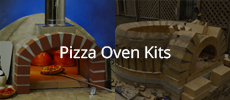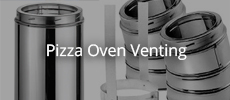Pulled off the outer moulding (all but two pieces of board that help form the bottom portion of the inside arch of gallery. White stuff is styrofoam filler. Then sand on top. All looks pretty good overall.
This pic shows detail of the inner part of the gallery arch (how I used wood and sand).
Announcement
Collapse
No announcement yet.
Longmont, CO new WFO build - casted over sand
Collapse
X
-
Love the HF cement mixer! I've used mine already for the hearth. I am actually building forms for my dome (I know the sand castle is quicker, but I want to build the forms) and should cast my oven over the long 4th of July weekend. Guess I should start a build thread.
Leave a comment:
-
Mould I built. This allowed me to push castable down into the two sides of gallery, but then have ability to free-form build on top of the sand, to get the smooth transition from gallery/entry up to 6" ID chimney flue.
Forgot to use wet newspaper when we built the dome, seems to be fine though.
Went to use the wet newspaper yesterday, but we had problems with it laying flat and sticking, so we removed it and went directly over sand again.2 PhotosLast edited by cnegrelli; 06-19-2017, 07:22 AM.
- Likes 2
Leave a comment:
-
Back from business travel, I was able to work on the WFO this weekend. Because of the earlier mishap whereby the entry sand mold collapsed during the process of putting on the refractory, I'd been thinking about the impact for that. Partially removed sand from the dome entry area and ascertained that everything ended up fine to that point, with the exception that the right side of the gallery had shifted forward just under 1" compared to the left side. In other words, my "inner arch" is not square to the front area.
So I resolved to make my thermal break a bit wider and make up the "squareness" using varying thicknesses of the vermiculate and ceramic rope "joint" that will join the Entry to the Dome.
I then decided to build a mold separate from the dome (rather to cast-in-place up against the dome. The dome was completed 6 days ago.
Mold built that uses plywood to hold up the gallery sides for the first 6.5" and then uses Sand to slope up the arch and also create a funnel for the flue. Topped it off with a cardboard template that mimics the Chimney Anchor Plate I purchased from Forno Bravo. Stainless hardware embedded. Found a windshield fluid bottle which was just slightly larger than the anchor plate's opening (6" diameter) so it should fit comfortably with room for thermal expansion.
Leave a comment:
-
I use an old butter knife, then rub the surface with finger tips.
- Likes 1
Leave a comment:
-
You may have some voids to fill on the inside so keep the casting damp until you remove the sand. I sieve out the larger aggregate and make up some mix to a peanut butter consistency for doing this operation.
"Weak as in 5:1?
How about a Vericulite / Refractory mix for this application? I am fresh out of concrete mix."
Yes, but sieve out the aggregate from the castable so it's cement content is greater, then use 6:1 vermiculite, sieved castable. That should give you a material that will hold together but have some give.
Last edited by david s; 06-14-2017, 01:49 AM.
Leave a comment:
-
removed form this morning. Casting looks pretty good.
david s I will have 3-4 days before I can do the gallery/flue area. Should I leave sand in until then, thru that time, or beyond? Currently keeping it wet and covered with plastic. Hard as a rock this morning.
Also didn't expect it to be lava black!
Leave a comment:
-
Just about at the end of forming the dome with Castable. Cast Max 28 was the product.1 Photo
- Likes 1
Leave a comment:
-
Well I was able to get the oven floor fairly level across. I finished cutting my bricks (there' still a lot of cuts for the floor even with an enclosure as I didn't want 4" of brick hanging out over the CaSi. I ended up just using my chop saw with a good respirator. Wet saw would have been nice, but my guy went off to Africa at the exact wrong time!
Also cut a floor gap between the dome and gallery. I plan to fill this with some ceramic braided rope and top it with vermicrete.
I then moved onto the vaunted sand dome. EVERYTHING David S has stated was true. Used a skinny dowel marked with both the ID and OD height, held up by sand castle. Had my boys helping me, so it went fast. Put the door form in place.
Then moved on to mixing the castable refractory product. When I weight out the 5 pounds of stainless needles, I discovered I got more like 3.2 lbs. Thanks warehouse guy!
This process was going smooth until my ill-supported entry form moved back when I was pressing castable onto the arch area above the entry. This caused a sand cave-in, followed by some choice words with myself. The lower levels had set pretty good and I was forced to remove sand and castable that was still not setup, and redo the sand mold in that area, before proceeding. Hopefully it will come out well. Moved some Kettle Bells in front after that with no further problems. I do believe the inner arch will be a bit off the floor cuts I did for the thermal break, but I will re-assess in a few days. I'm off on a business trip so the dome will wet cure for the next few days assuming the wife keeps it wet!
Overall, very easy to work with I thought. Half a bag at a time. The directions were much too dry but it was easy to make too wet as well (first batch was that way. We had trouble getting 4" to hold itself up and ultimately, we ended up letting it slump so our lowest few inches are much thicker than 2". That shouldn't hurt anything. After that, we found the right consistency. We ended up with a bit lumpy of a finish, but it will never be seen on the outside.
Here's some pics.1 Photo
Leave a comment:
-
We see this quite often. Try and get the brick edges as uniform in height as possible. It can be a catching point for the peel as you slide in your pies. That said, once the floor is laid but before you place on your cast dome, you can knock off the high points with an angle grinder and a diamond cup disk. I have seen some builders used a belt sander with a coarse grit bet. Just something to knock of the sharp edges of the brick.
- Likes 1
Leave a comment:
-
I did some leveling and got the foamglas and CaSi layers level. Having some slight height issues with the Fire Brick as a few seemed a bit proud of others.Originally posted by UtahBeehiver View PostYou may not need to level the FoamGlas/CaSi if your hearth was poured flat. You will "not" see significant temperatures on the bottom side of 4" of insulation. If you need to so some leveling, a damp sand mix grooved with a notched trowel will suffice.
Is this common and how perfect am I shooting for in terms of consistent height on the floor?
Leave a comment:
-
Castable achieves full strength in 24 hrs in warm weather. Start from the bottom and work all the way around making the wall about 4" high with a flat ledge on the top so the next layer has something to sit on. I gets easier once the walls start to lean in.
Leave a comment:





Leave a comment: